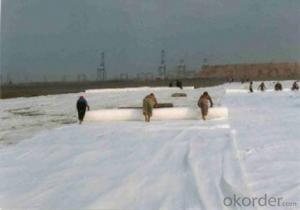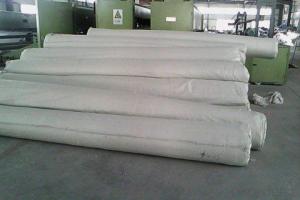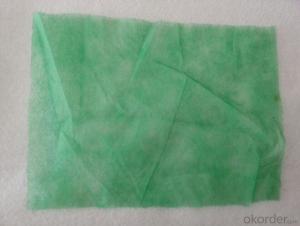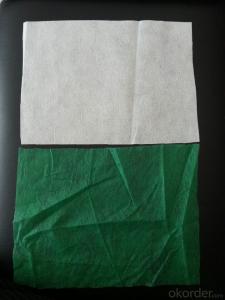Staple Fibers Punched Non Woven Geotextile Direct Factory
- Loading Port:
- Qingdao
- Payment Terms:
- TT OR LC
- Min Order Qty:
- 1000 g/m²
- Supply Capability:
- 100000 g/m²/month
OKorder Service Pledge
OKorder Financial Service
You Might Also Like
Introduction:
Staple fibers needle punched non woven geotextile is made of PP or PET staple fibers on carding cross- laying equipment and needle punched equipment.
Application: Mainly applied in water conservancy, road and railway for strengthening, separation, reversed filter and drainage of projects
Properties of Staple fibers needle punched non woven geotextile
Item (g/m2) | 100 | 150 | 200 | 250 | 300 | 350 | 400 | 450 | 500 | 600 | 800 | Note |
Mass error in unit area (%) | -8 | -8 | -8 | -8 | -7 | -7 | -7 | -7 | -6 | -6 | -6 | |
Thickness (mm) ≥ | 0.9 | 1.3 | 1.7 | 2.1 | 2.4 | 2.7 | 3.0 | 3.3 | 3.6 | 4.1 | 5.0 | |
Error of width (%) | -0.5 | |||||||||||
Breaking strength (KN/m)≥ | 2.5 | 4.5 | 6.5 | 8.0 | 9.5 | 11.0 | 12.5 | 14.0 | 16.0 | 19.0 | 25.0 | MD/CD |
Elongation at break | 25~100% | |||||||||||
CBR puncture resistance (KN)≥ | 0.3 | 0.6 | 0.9 | 1.2 | 1.5 | 1.8 | 2.1 | 2.4 | 2.7 | 3.2 | 4.0 | |
Equivalent Pore size O90( O95) | 0.07~0.2 mm | |||||||||||
Vertical permeability coefficient | K×(10-4~10-3)cm/s | K=1.0-9.9 | ||||||||||
Tearing strength (KN)≥ | 0.08 | 0.12 | 0.16 | 0.20 | 0.24 | 0.28 | 0.33 | 0.38 | 0.42 | 0.46 | 0.60 | MD/CD |
Images of non woven geotextile
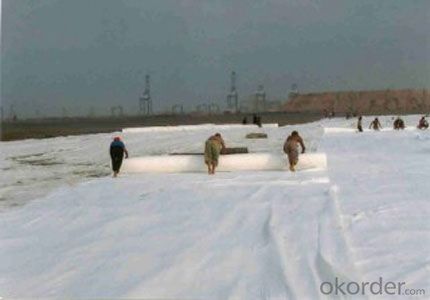
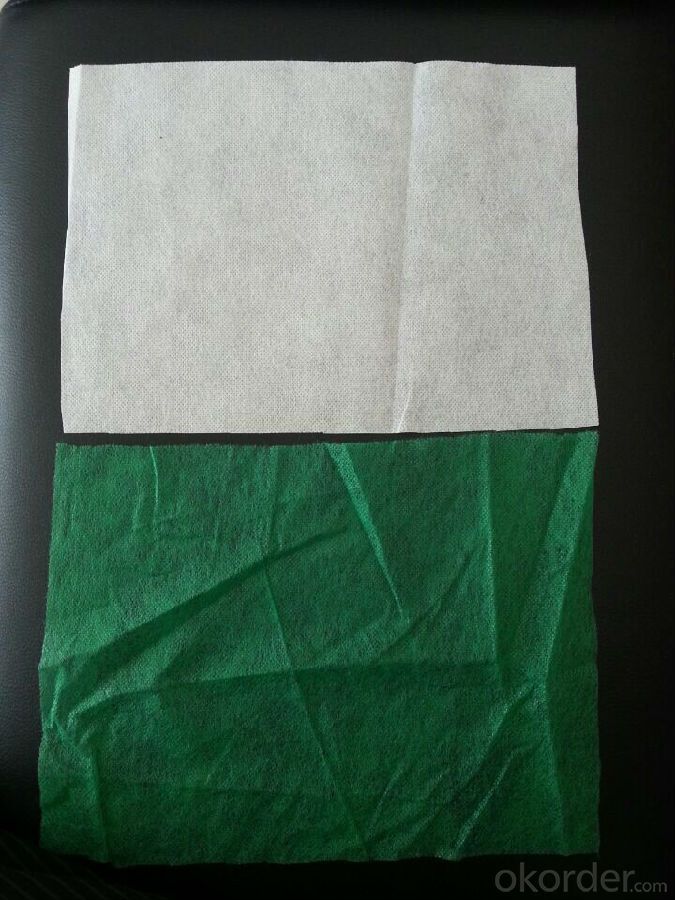
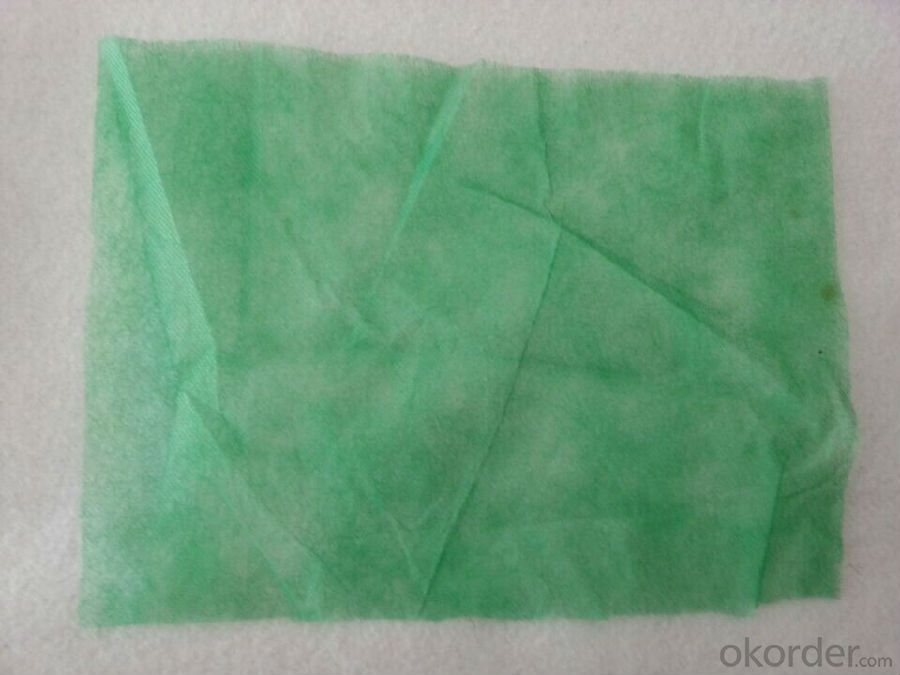
- Q:Sng400-2.5gb / t-1998 geotextile is what the specifications
- SNG400-2.5 refers to the national standard polyester staple acupuncture non-woven geotextile 400g / ㎡, width 2.5m. The standard code for the GB / T-1998 staple fiber nonwoven geotextile is generally the SNG / (1) (2) / (3) - (4) / (5). (1) that the use of raw materials fiber code: PET-polyester, PP-polypropylene, PA-nylon, PV-vinylon, PE-Ethylene (conventional polyester are generally vacant omitted code) (2) that polyester staple fiber non-woven Geotextile per unit area weight. (3) that the composite products in the polyester staple fiber non-woven geotextile weight per unit area, non-composite product vacancies. (4) width, expressed in meters (5) production department number: can express the product more specific characteristics, functions, varieties, sequences, etc., the general vacancy. For example, 2.5m wide 400g / ㎡ polyester staple fiber non-woven geotextile representation of the method can be SNG / PET400-2.5, can also be expressed as SNG400-2.5
- Q:Ask geotextile factory in the use of geotextile aperture detector detection method which?
- Hello, geotextile detection method in GB / T and GB / T geotextile aperture in the introduction, you can look at these two standards. The first is geotextile pore size detection wet sieve method, the second is geotextile aperture detection dry sieve method. As the name suggests the first of these two methods is the participation of water, the other is basically the same, are placed in a single layer of geotextile standard small particles, through the vibration to detect the size of the leakage of particles to determine the geotextile pore size size. The difference is that the first standard in the need for continuous water on the particles, so the calculation method are also different. Specific detailed distinctions You can search these two criteria separately.
- Q:How are geotextiles secured in place?
- Geotextiles are secured in place through various methods such as anchoring with stakes, pins, or staples, using sandbags or rocks as weights, or by installing them with mechanical devices like anchors or tiebacks.
- Q:How do geotextiles help with reinforcement of embankments?
- Geotextiles help with reinforcement of embankments by providing stability and preventing erosion. They act as a barrier against soil movement, distributing the load and reducing the potential for settlement. Geotextiles also allow for water drainage, preventing water buildup and maintaining the embankment's structural integrity.
- Q:Are geotextiles resistant to biological degradation?
- Yes, geotextiles are generally resistant to biological degradation.
- Q:Textile geotextile lap length how much
- Lap width is generally 10-15cm
- Q:Are geotextiles resistant to rodent damage?
- Yes, geotextiles are generally resistant to rodent damage. Their strong and durable construction makes it difficult for rodents to chew through or damage them.
- Q:How do geotextiles improve the performance of geomembranes?
- Geotextiles improve the performance of geomembranes by providing separation, filtration, and reinforcement functions. They prevent the mixing of different soil layers, enhance drainage, and distribute loads more evenly. Additionally, geotextiles protect the geomembranes from punctures and abrasions, thereby increasing their durability and lifespan.
- Q:Supply Tianhe District staple geotextile and anti-geotextile what is the same
- Staple geotextile is made of polyester staple fiber by acupuncture, because it can play the role of anti-filtration, and thus staple geotextile can also be called anti-geotextile. Filter geotextile is based on the use of the name, so long as it is able to play the role of anti-filter geotextile called geotextile filter, geotextile, including geotextile geotextile, filament geotextile, the preparation of geotextile, Woven geotextile, non-woven geotextile, polypropylene geotextile. Tianhe District used staple geotextile and anti-filter geotextile is the same.
- Q:How do geotextiles help with erosion control in river channels?
- Geotextiles aid in erosion control in river channels by acting as a protective barrier against soil erosion. They are placed along the riverbanks or riverbeds to prevent the loss of soil particles due to water flow. Geotextiles stabilize the soil, increase its resistance to erosion, and promote vegetation growth. Additionally, they allow water to pass through while retaining sediment, thus reducing sedimentation in the river channel.
1. Manufacturer Overview |
|
|---|---|
| Location | |
| Year Established | |
| Annual Output Value | |
| Main Markets | |
| Company Certifications | |
2. Manufacturer Certificates |
|
|---|---|
| a) Certification Name | |
| Range | |
| Reference | |
| Validity Period | |
3. Manufacturer Capability |
|
|---|---|
| a)Trade Capacity | |
| Nearest Port | |
| Export Percentage | |
| No.of Employees in Trade Department | |
| Language Spoken: | |
| b)Factory Information | |
| Factory Size: | |
| No. of Production Lines | |
| Contract Manufacturing | |
| Product Price Range | |
Send your message to us
Staple Fibers Punched Non Woven Geotextile Direct Factory
- Loading Port:
- Qingdao
- Payment Terms:
- TT OR LC
- Min Order Qty:
- 1000 g/m²
- Supply Capability:
- 100000 g/m²/month
OKorder Service Pledge
OKorder Financial Service
Similar products
New products
Hot products
Related keywords

